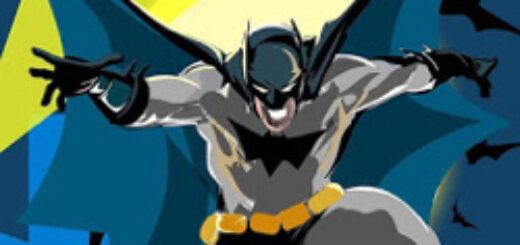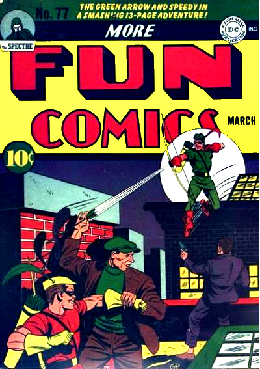Ed Catto: Talking About – And With – DC In The 80s
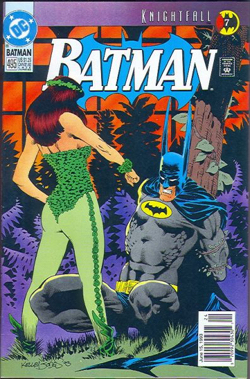 DC in the 80s is a Webzine for the DC Comics Fans with an affinity for 80s comics. It’s fun, upbeat and engaging. Justin Francoeur and Mark Belkin keep the fan fires burning with wit and a great degree of nostalgic professionalism. I’m fascinated by the their endeavor, so I reached out to discuss it with them.
DC in the 80s is a Webzine for the DC Comics Fans with an affinity for 80s comics. It’s fun, upbeat and engaging. Justin Francoeur and Mark Belkin keep the fan fires burning with wit and a great degree of nostalgic professionalism. I’m fascinated by the their endeavor, so I reached out to discuss it with them.
Ed Catto: Can you tell me a little bit about the site and how it came about?
Justin Francoeur: My formative years of comic book reading were during the early 80s to the early-to-mid 90s. Roughly six years ago, there wasn’t much on the Internet about DC Comics from the 80s (or it was scattered all over the place and not easy to find) so I decided to make a tumblr blog specifically spotlighting the house ads of that era. There were a lot of ‘buried gems’ in that time period and my goal was to identify them and discuss the interesting history behind them. It just started as a review site, really.
You can thank our executive editor, Mark Belkin, for the evolution of this site. It was his suggestion that DC in the 80s could be something more. With his help, it went from a tumblr blog to a website with reviews, articles and interviews. We chose a ‘zine interface to emulate the DIY aesthetic of the 1980s ‘zine culture – where anyone with a typewriter, a passion for something, and access to a Xerox machine could distribute an 8-page booklet to anyone willing to read it. Despite our commitment to journalistic integrity, this is still just a fun project for us – and we hope the DIY aesthetic of our site reminds people of that.
Mark Belkin: Justin invented it and ran it for a long time before I came along. I joined in about 2014, and Justin asked if I would post a few things. I did for a bit, but I did not get involved until later – 2015. Justin started to kick around the idea of me interviewing people and being more involved, and I felt inspired to do more. Now I feel I am a great #2 to Justin, and am really happy being a “full time” contributor. We click when it comes to making the site grow, and seem to do well working off each other.
EC: Why do you think there is so much interest in DC Comics from the 80s?
JF: To be candid with you, I think it had a lot to do with the New 52 DC relaunch of 2011. I think the radical reboot of a lot of DC characters had readers – mainly millennials – who still wanted to read about their favorite DC characters, re-visit their favorite comics they read growing up and it brought back a renewed interest in the 80s (and by extension, the early 90s) material. DC fans don’t disappear, if they’re not happy with what’s currently being published, they just re-read their favorite comics from their back-issue bin.
Additionally, there’s a bit of a retro 80s craze run-off that has drawn people to our site. Prime examples include VH1‘s I Love The ’80s, National Geographic‘s The 80s: The Decade That Made Us, as well as numerous radio stations and websites that are fixated on 80s nostalgia. Enough time has elapsed that it’s cool to look back and celebrate the 80s in an un-ironic way. Part of the original goal of this ‘zine is to tie-in what was happening in then-current 80s culture with what was happening in DC Comics of the 80s and create some links between the two. I always like it when a reader leaves the site learning something new. I also like it when a reader leaves a comment along the lines of “I totally remember that comic series! I’m going to go out and hunt it down again! Thanks!”
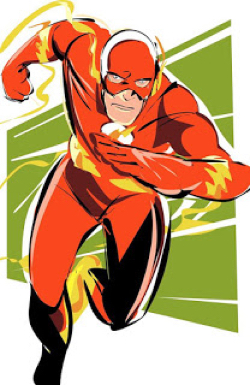 MB: DC Comics in the 1980s was a revolution in creativity. Because of the late 70s implosion and the almost sale of DC to Marvel in the early 80s, I believe that they were willing to take more chances. Paul Levitz, Karen Berger, Jenette Kahn, Dick Giordano, they took so many risks creatively and brought in amazing creators. They gave people chances to experiment, to kill off tested characters, to change everything around. I would have killed to be in those Len Wein/Marv Wolfman editorial meetings when they were planning Crisis and Who’s Who. From everything I read, it evolved organically and grew from them just doing it… and later bringing in British talent like Brian Bolland, Alan Moore, Neil Gaiman, and Grant Morrison. These are the most creative comic books creators of all time. What they did was change the world.
MB: DC Comics in the 1980s was a revolution in creativity. Because of the late 70s implosion and the almost sale of DC to Marvel in the early 80s, I believe that they were willing to take more chances. Paul Levitz, Karen Berger, Jenette Kahn, Dick Giordano, they took so many risks creatively and brought in amazing creators. They gave people chances to experiment, to kill off tested characters, to change everything around. I would have killed to be in those Len Wein/Marv Wolfman editorial meetings when they were planning Crisis and Who’s Who. From everything I read, it evolved organically and grew from them just doing it… and later bringing in British talent like Brian Bolland, Alan Moore, Neil Gaiman, and Grant Morrison. These are the most creative comic books creators of all time. What they did was change the world.
They also gave other talent a chance to take some pretty incredible changes. Sure, putting Frank Miller on a Dark Knight series makes sense – he had such buzz coming off his Daredevil and Ronin work – but it’s still ballsey. Robin being dead? Old man Batman? Letting Frank turn their number one property, Superman, into a tool for the Government, and openly mocking him? These stories are still some of the best of all time, and editorial deserves respect for letting it happen.
They let Keith Giffen go nuts on Legion of Super Heroes art and nuts on the comedy with Ambush Bug, and then let Keith and JM Dematteis experiment with Justice League. They brought in John Byrne to do what he wanted with Superman, pushed George Pérez onto Teen Titans, Mike Grell on Green Arrow, Timothy Truman on Hawkman. These are some of the best comics ever made, and these stories stand until this day.
My dream has always been to be an editor for DC Comics, and everything about what happened in the 1980s is what I would be absolutely honored and privileged to be a part of. Sorry, that turned into a thesis and/or cover letter. But long story short, the comics were dope, and they remain dope today.
EC: Back in the 70s, I remember the nostalgia craze for the 50s. Is something similar going on here?
JF: I honestly believe it’s a ‘generational’ thing. Growing up in the 80s I was still in elementary school and thus didn’t have much money to my name – thankfully, I had a huge long-box of then-current comic books my dad had been collecting for me, so I had a pretty healthy knowledge of what was going on. I always swore that someday I’d go back and revisit all of those issues I wanted to read. I’m thirty years older and now I have disposable income to spend, so this is a great time to catch up. We’d like to think that we’re here to help you find the hidden gems of that era.
MB: I feel that everything goes in 20-year cycles. The 70s had the 50s craze, which ran into the early 80s. The 80s had a 60’s thing that ran into the early 90s. The 70s into the 90s. Especially in music, fashion, and in art. If you think about the Silver Age, it was the Golden Age but updated. 60s updating the 40s. The 80’s Bronze Age updated the 60’s Silver Age. In the 2000’s, you saw the emergence of Identity, Infinite, and Final Crisis. Its 20 year cycles. Right now we are into the 90s, which I can’t speak to because I didn’t collect comics in the 90s. But even though we are nostalgic for the 80s, DC in the 1980s transcended the decade. Everything they did affected the 90s. Crisis, bwa haha Era Justice League, Watchmen, Dark Knight. All those affected the 90s and are still affecting comic books today.
Also, I think, we live in an age where the Library of Alexandria is at our fingertips, and people know which stories to scout out and buy. This makes it where people are always discovering the work, and people have such fond memories of it.
EC: How does the DC fan of the 80s differ from the DC fans of today? Or are they the same?
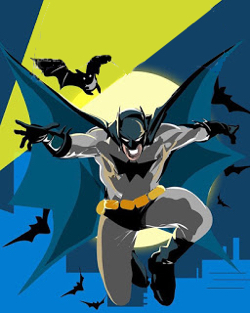 JF: The DC fan of today is multi-faceted; there’s lots of different ways to become a DC Comics fan. Of course there’s still the “physical” comic book, but now there’s also console/computer games [i.e. DC Universe Online, Batman: Arkham Knight], the films [i.e. Batman v Superman: Dawn of Justice, Suicide Squad], the live-action TV shows [i.e. Arrow, The Flash, Supergirl, Gotham] and the cartoons [i.e. Batman: Brave and the Bold, Vixen, Young Justice]. It’s actually a really great time to be into DC Comics – there are lots of options available.
JF: The DC fan of today is multi-faceted; there’s lots of different ways to become a DC Comics fan. Of course there’s still the “physical” comic book, but now there’s also console/computer games [i.e. DC Universe Online, Batman: Arkham Knight], the films [i.e. Batman v Superman: Dawn of Justice, Suicide Squad], the live-action TV shows [i.e. Arrow, The Flash, Supergirl, Gotham] and the cartoons [i.e. Batman: Brave and the Bold, Vixen, Young Justice]. It’s actually a really great time to be into DC Comics – there are lots of options available.
However, someone cosplaying as Stephen Amell’s Green Arrow will swear to you that they’re a major Green Arrow fan – and they’ll be absolutely correct – but will have never heard of Mike Grell’s The Longbow Hunters. This is one demographic of fans we’re trying to reach. They may never actually end up touching a comic book (being satisfied with the CW universe of the character), but if we can convert a few of them over to DC comic book fandom, that’s great.
On the other side, I’m finding that fans of the 80s material are generally not too keen on adapting to the more current media. They are less likely to be standing in line on opening night for Suicide Squad because “it’s not the Suicide Squad they grew up reading, but they’ll watch it when it inevitably comes to Netflix”. Coincidentally, these are also the really interesting fans to talk to – you can tell that DC Comics from that era really had a profound effect on them and they will happily tell you all about what it was like collecting the comics, playing the RPGs, watching the Superman films for the first time and their initial reactions to major DC comic moments like Crisis On Infinite Earths, John Byrne’s Superman relaunch, or Frank Miller and David Mazzucchelli’s Batman: Year One.
MB: I remember going to comic book shops from ‘85 until the summer of ‘89, when I stopped collected. I think the Marvel movie success has brought back the kids to shops and conventions. For a while, you never saw kids going into comic book stories. When I was a kid, I saw a lot of adults, but they were considered “childish” or immature for liking comic books. I could feel their stigma. Nowadays there is still a stigma, but it’s different.
Another difference is there are a lot more ‘in the know’ fans then back then. I remember there was the guy who would read Amazing Heroes and/or The Comics Journal and knew so much more than we did. In fact, knowing too much is what killed comic book collecting for me in 1989. Someone told me about an interview with Rick Veitch, and how he was not allowed to do the Swamp Thing #88 the way he wanted, and was off the book. It killed everything for me. If I had never known that, and all I simply knew was that he was no longer doing the book for whatever reason, I may have stayed collecting. And maybe that’s something today? Too many people know too much about how the sausage is made and it translates into people dropping the hobby. Could be the price too. Comics seem to be doing ok now, so maybe people are coming back.
We review a lot of new material, because we want the fans of the 80s to know there’s a lot of great new stuff that DC is doing. I love the Rebirth stuff, and I’m excited for the new Doom Patrol. We try to break through the stereotype of “everything new sucks,” because I don’t believe that. There is always good new music, art, movies, and there are definitely good new comics. I just read All Star Batman #1, and was really excited to see where Snyder and Romita Jr would be taking the story. In my opinion, Tom King, Gail Simone, Jeff Lemire recently, and some others, have done some of my favorite comics books in decades.
EC: It seems like there’s a lot of 80s cosplayers and customizers out there. Why do you think that is?
JF: Mark is typically on the front lines at the comic conventions interviewing creators and taking photos of cosplayers. I tend to be more of the ‘Oracle’ to his ‘Batman’ (filling out the paperwork, researching for interviews, managing the e-mails and social media accounts), so I don’t get much opportunity to talk to cosplayers. The ones I have chatted with are doing it for the pure love of the character. I feel that anybody who’s willing to parade around wearing silver body-paint for the afternoon to look like Captain Atom is worthy of being called a DC fan.
I think the customizers (I’m assuming you’re referring to ‘action figure customizers’) are really just trying to fill a void – a lot of cult-favorite 80s DC characters were never immortalized as action figures [i.e. Infinity Inc., All-Star Squadron, L.E.G.I.O.N.] and this is their chance to rectify that. The Kenner Super Powers Collection were some of my favorite 80s toys growing up (I suspect that’s the case with a lot of our readers) and I could only imagine what would’ve opened up for me had the toy line lasted more than 3 waves.
MB: People like dressing up and making things their own. Not in a bad way, but we live in a very “Look at me” generation, where people are constantly one-upping themselves on social media. Not a bad thing at all. I also think it goes back to people knowing about more characters, and being able to get resources (‘How-to’ videos on YouTube, any materials you may need on Amazon) to make great costumes and action figures. I actually really enjoy collecting DC action figures, and would like to customize a few I’ve never found.
EC: Have you had any surprises from your fans? I’m curious how predictable or unpredictable 80’s DC fans are.
MB: Justin is much better to speak on this. He answers the emails and tweets. I’m too busy caring about myself.
JF: The fans I’ve encountered have always been polite, knowledgeable and eager to share memories with us. Something that always seems to catch me off guard, however, and I’m not sure if this is just limited to fans of comics from the 80s or all comic book fandom in general, is how much venom and vitriol is directed towards the whole “Marvel comics films vs. DC Comics films” debate. It’s not like you need to choose sides; this isn’t the Spanish Civil War. You can appreciate both companies for what they are. Calling ourselves “DC in the 80s” is a bit of a misnomer, since we’re not “DC or nothing” fanboys. A lot of great work came out of Marvel, DC, Eclipse, First, Pacific, Renegade Press, Fantagraphics, Kitchen Sink Press and Dark Horse during the 80s and we recognize and acknowledge that.
MB: I loved DC, but I also loved Grendel and Elementals in the 80s. Almost as much as anything. But DC is my favorite. I might be categorized under the “Make Mine DC” crowd, even if I own 200 issues of X-Men.
EC: What’s your favorite series from the 80s? What are your favorite series now?
JF: At the risk of sounding cliché, I’m still discovering new 80s favorites on a monthly basis as I’m re-reading older DC material for what seems like the first time. If I had to narrow it down to just one, I’d go with Grant Morrison’s run on 1988’s Animal Man ongoing series. Those 26 issues really changed the way I looked at comics. I actually discovered it a bit later in life – during my early college years. I remember reading the TPB off the rack at my local Chapters and I was so impressed by it that I returned the next day to purchase it (and the following two volumes). It’s been sitting on my bookshelf ever since.
Currently, the DC material I am most excited for is Gerard Way’s Young Animal imprint. I’ve flipped through the ashcan and am thoroughly impressed. I’m really hoping that a new batch of talent can re-spark that ol’ Vertigo magic that really made DC stand out over everything else on the market in the late 80s/early 90s. The first few issues have been released yesterday and as of this writing I’m actively trying to avoid comic book review sites (and spoilers) until I can pick up the issues myself and read them with a blank slate.
MB: Other than everything Alan Moore did, I have three special series:
- The Rick Veitch run on Swamp Thing. So criminally underrated and I want nothing more than convince Dan Didio and Jim Lee to publish #88. It was so twisted, so dark yet funny, so smart. I loved Veitch, and I will have an interview with him that I got in Baltimore, probably in the next few weeks.
- Doom Patrol with Grant Morrison, Richard Case, with lettering by John Workman. I had the pleasure of meeting Mr. Case and Mr. Workman recently, and am working on a story based on that run. I think there is such an amazing artistic spiritual undertone to that run. Especially the Painting That Ate Paris with the Brotherhood of Dada. I feel I could teach a course on that run, and still not be able to convey how groundbreaking it was. As Justin said, that Animal Man run is up there, but Morrison’s Doom Patrol run was magical for me.
- The Question by Dennis O Neil and Denys Cowan. Everything about this made Question my favorite all time character. It was surreal, intelligent, real and violent. It spoke to me as someone growing up in Brooklyn and discovering philosophy, and violence in the streets.
JF: Thank you so much for having us on ComicMix!

